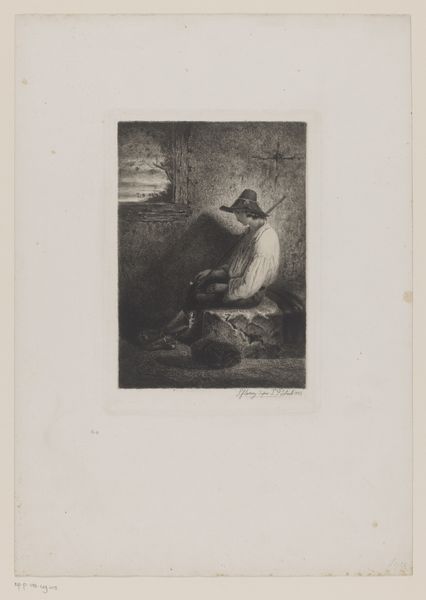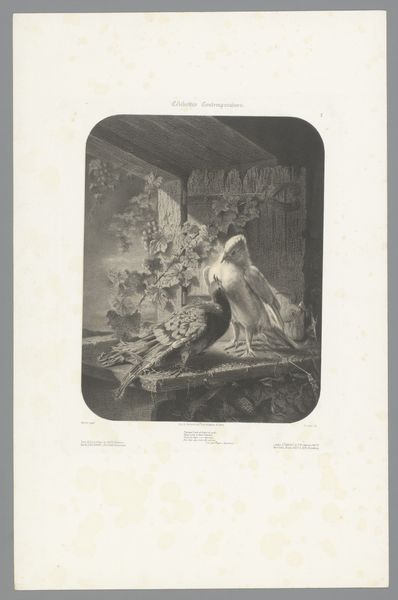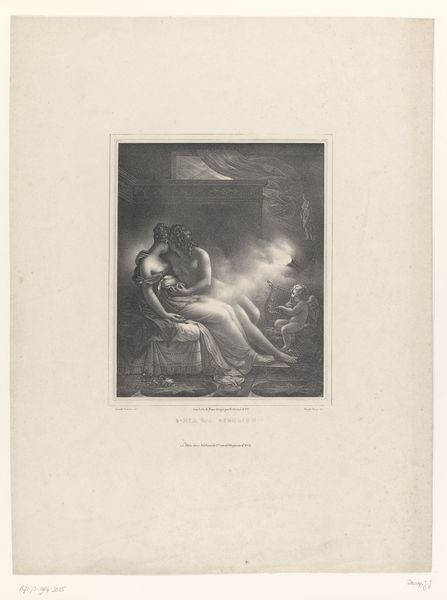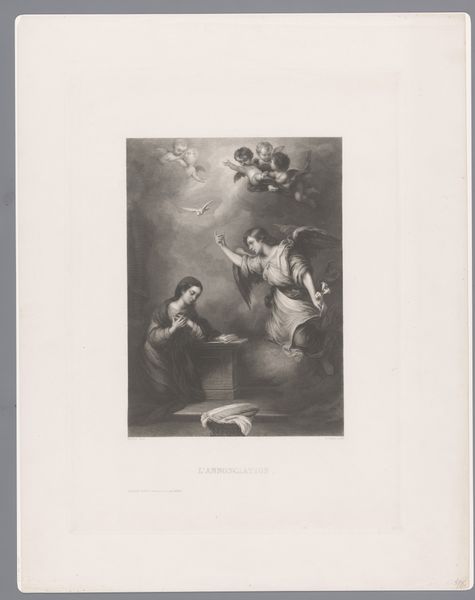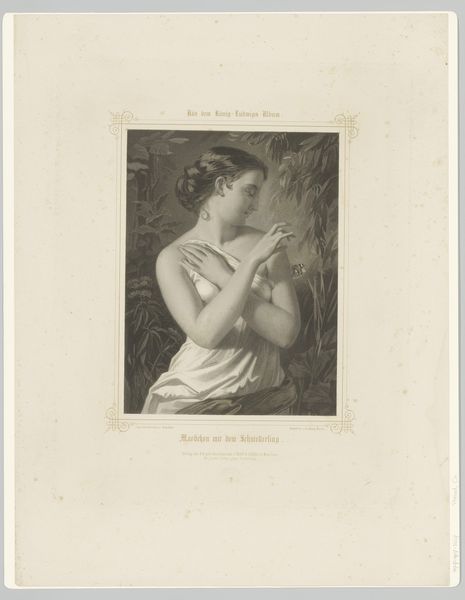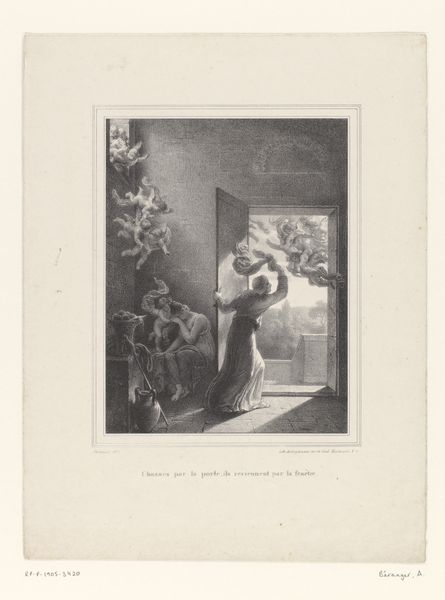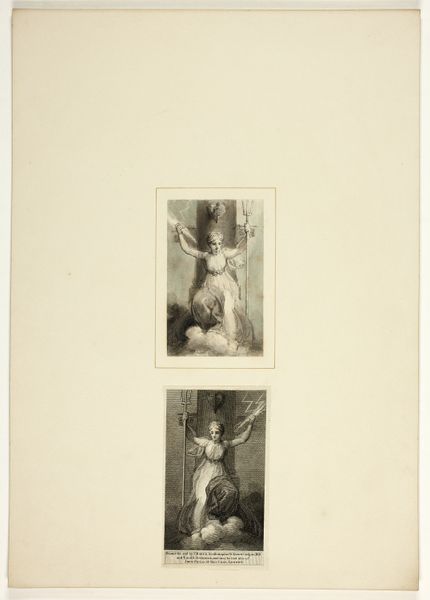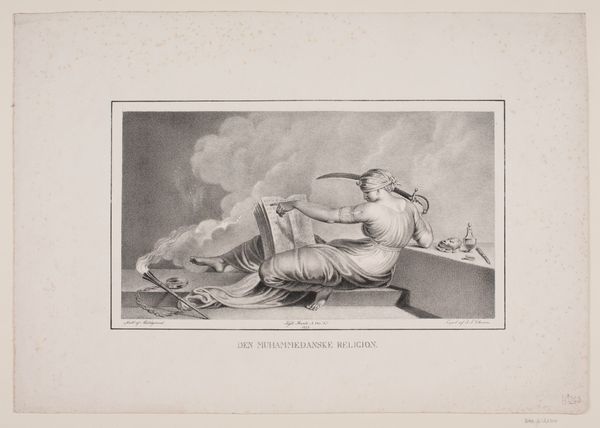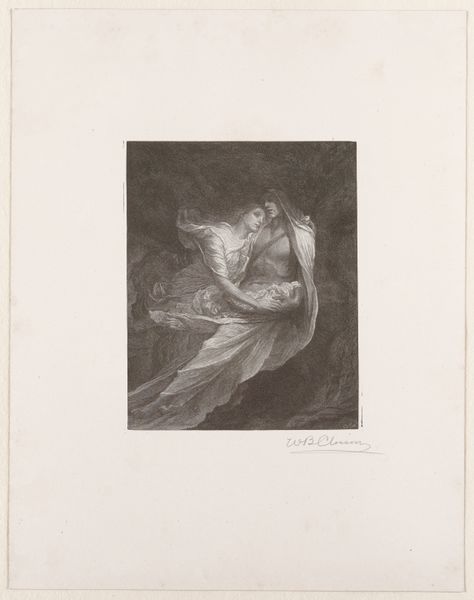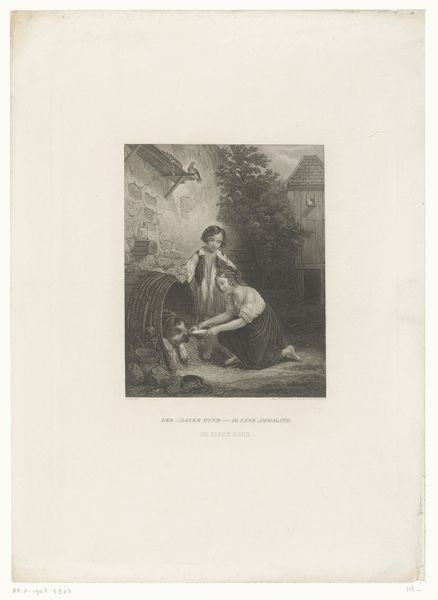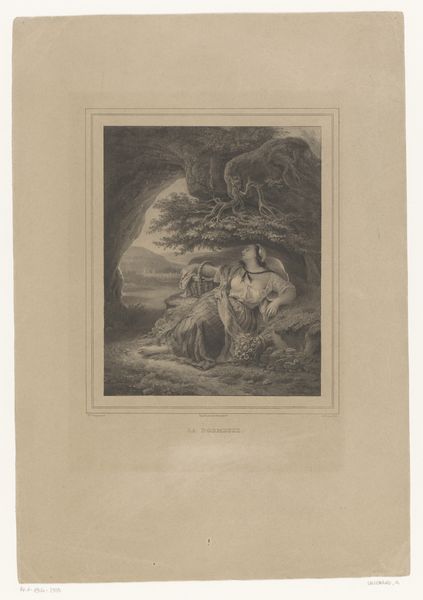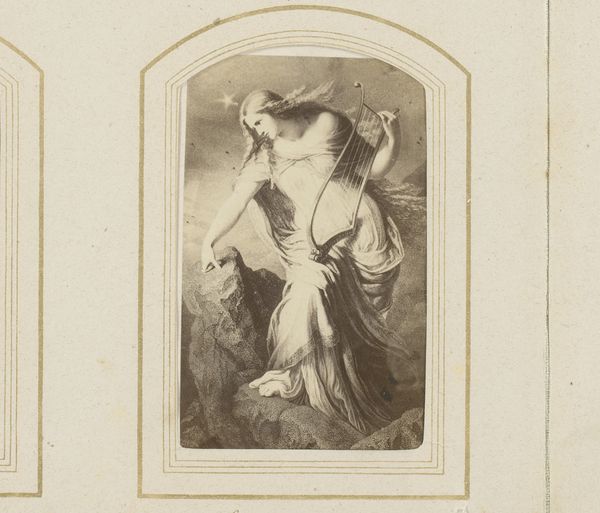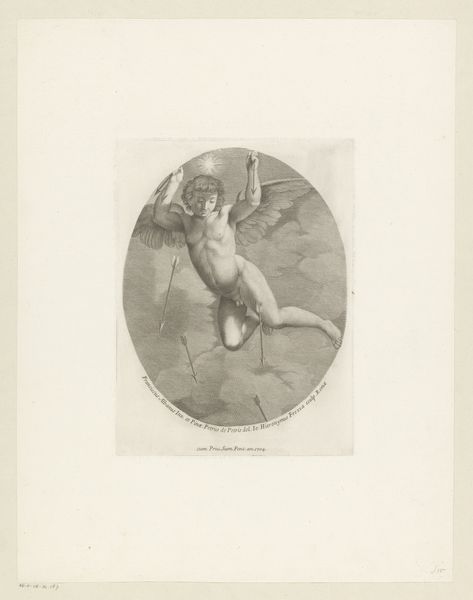
Dimensions: 400 mm (height) x 288 mm (width) (billedmaal)
Curator: Looking at this somber scene, I immediately sense a kind of desperate hope against overwhelming odds. Editor: Indeed. We’re observing Adolph Kittendorff's "Hero," a lithograph from the 1880s, part of the collection at the SMK, the National Gallery of Denmark. It's a rather striking example of Romanticism. Curator: The stark tonal contrasts! Tell me, what are your insights into the technical process and choice of material? The very act of translating such an image through lithography... Editor: It’s fascinating. Lithography allowed for a relative democratization of image production during that era. Consider the socioeconomic implications – Kittendorff utilized readily available materials and techniques to bring the high drama of classical myth, of course with a bit of eroticism to the masses, challenging traditional notions of artistic creation. Curator: True, true, but beyond that initial availability is its dissemination. That access can democratize information in unique ways. The themes become incredibly powerful when placed in the homes of ordinary individuals. Tell me more, though. What narrative are we observing here? Editor: The print portrays Hero from the Greek myth of Hero and Leander. She is depicted holding a lamp to guide her lover, Leander, as he swims across the Hellespont. Note the charged representation of waiting, endurance, and, ultimately, tragedy. She is the representation of idealized womanhood, as a symbol of erotic availability and devotional watchfulness, framed within larger dialogues around gender and agency, as if woman's labor can be seen as emotional dedication. Curator: Yet the setting, the churning sea… It imbues the waiting figure with vulnerability. One begins to sense an imbalance between the scale of her labor and the sea. How much longer before that dedication runs out, one is prone to wonder? How sustainable can we view it, if so much rests on her emotional dedication alone? Editor: Absolutely. This portrayal is deeply entwined with broader artistic movements and the constructions of gender and identity in that era. Her light stands in resistance against great forces... it’s easy to view her emotional toil and dedication within similar struggles and dynamics in the broader era as well. Curator: I suppose when thinking of lithography, you do encounter themes of distribution, power, visibility—things so clearly relevant even today. The Romantic style just emphasizes how strongly this kind of representation plays to the masses. Editor: And looking closer, there’s so much embedded in those inky, shadowy depths still to be revealed in the telling of this timeless tale.
Comments
No comments
Be the first to comment and join the conversation on the ultimate creative platform.
